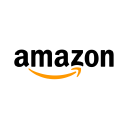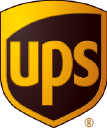On Turning His Side Hustle Into A Full Scale Business
Hello! Who are you and what are you working on?
I’m Tim Trampedach, founder and CEO of Torqued. My company imports and distributes motorsports parts, meaning products for race cars or cars that are used on a race track from time to time. The company grew out of side hustle importing carbon fiber racing seats from a company called Tillett Racing Seats in the United Kingdom.
We sell well over a hundred of these seats a year now, at a typical price with options and accessories of $1500. While this is the line we’re best known for, we’ve most recently branched out into other premium foreign brands like Nuke Performance, Reverie, SOBEK Motorsporttechnik as well as domestically-available brands in order to build a cohesive product offering for our dealer network.
What's your backstory and how did you get into entrepreneurship?
Throughout my career, I’ve always taken breaks from traditional salaried jobs every few years to do something different. I’ve gone back to graduate school, focused on angel investing, set up an income-generating property, started companies and done short-term product and engineering management consulting. Many have worked out, some haven’t, and I’ve often pivoted back to a “real job” when an interesting opportunity presented itself.
Follow your passion only if you’ve done a proper business case for it.
I’ve also always been a “car guy,” more specifically someone that loves to build cars. I built a Shelby Cobra replica a few years after college, which I sadly had to sell prior to going to graduate school, and I then got the itch again a few years after graduate school to build something more unique. This was always purely for fun, though, and auto racing and cars were never part of my job.
Investing into a number of companies and providing them advice (probably unsolicited sometimes!) and feedback recently made me want to start a business myself again. Personally, however, I wanted to start a business not only in a field that I enjoy, but also one without outside investors. It’s a very different path, one not commonly taken in Silicon Valley, but for the type of company I wanted to build in the industry I was going after, I knew it was possible.
Self-funding is a risk, but one I felt strongly about taking to maintain full independence. Fortunately, I was able to do it with a combination of personal funds and proceeds from an investment property. The fact that my wife has a full time career herself helps a lot, too -- that makes things like a steady income and affordable access to health insurance easier. My entrepreneurial pursuits work for us as a family because we do it as a team.
Take us through your entrepreneurial journey. How did you go from day 1 to today?
The start date of Torqued is a bit blurry given that it used to be a side hustle. Some of the relationships, namely the Tillett one, have been around for a long time and I built many of the basic systems, like X and X, in those early days.
I took 1-2 months prior to our formal launch date, which was about August 1, 2018, to get everything ready. That meant renting warehouse space, outfitting the warehouse and spinning up the most basic version of our custom inventory management system and eCommerce frontend.
The goal of the company is to grow 10% per month. We haven’t done this linearly, but in aggregate grew 13% monthly in our first year of operation.
First and foremost, I’m focused on answering the question: how do we continue to scale, solely by reinvesting profits into the company? It’s a tricky task, involving both the supply and demand side. We continue to bring on more brands and products to sell or distribute - but this takes capital - and we’re always looking for new dealers or channels to sell, which also takes capital and time.
There’s no silver bullet here other than 1) set time-bound goals for yourself and your business, 2) ruthlessly prioritize your days toward these goals and 3) figure out ways to outsource or hire staff to delegate to and empower. It’s really not that different from running a team or a line of business in a large company.
How are you doing today and what does the future look like?
We have been expanding by at least one additional brand a month, all via direct purchases from a manufacturer and usually at the master dealer level, meaning the best discount possible by placing a large initial order.
Our COGS varies greatly by product and strategy for that product. On some, where we have pricing flexibility we might try to use the product as a loss leader. On others, we offer free shipping and with low product value, we compress margins sometimes down to near zero. We do it though in order to provide consistent service and provide products for all kinds of customers, whether it’s someone who can buy $3000 in seats or someone who is buying a $25 performance part. We believe that everyone should get an excellent customer experience.
Even though we do a lot of sales via dealers on a custom dealer-only interface, we do also work on our customer-side conversion, which seems to be at or above the industry standard for eCommerce from what we know about our competitors. That said, we’re always trying to get to significantly above 1% and have lately been focused on all the funnel stages prior to checkout success. This takes work, grinding on UX, pricing comps, changes to ad buying, etc.
In general, we take a long term view of our customers. We’re less interested in the one quick incremental sales and instead think about Lifetime Value (LTV) of customers. This is why we invest time and effort into great customer service, which is clearly valued if you look at our TrustPilot reviews, for example. We also never spam our email list. Instead, we always provide valuable content or at a minimum unique product not available anywhere else in the US when we send emails to existing customers. Our rule is: would I want to receive this kind of email?
Through starting the business, have you learned anything particularly helpful or advantageous?
One thing I perhaps underestimated in eCommerce is the amount of fraud that happens or is attempted. There are multiple vectors, but the most common is stolen credit cards. You can turn on all kinds of fraud checks with your processor, but this can have a negative downside of false positives, which is a bad user experience and often a lost sale.
We’ve generally set up a system in which we approve most orders that are able to match zip code at our processor, then tag for potential fraud and manually review later, prior to shipping. This allows us to look into fraud holistically, considering everything from products in the order, shipping service, order value, payment method, and other data.
On the positive side, it’s great to see when customers value fast feedback to questions, particularly during evening or weekend hours. Typically we’re not available by phone, email and chat are answered at many times of the day since usually it only takes a couple of minutes to get the customer what they need.
We’re also starting to figure out influencer marketing without using agencies or other paid services. It takes time, you have to create your own voice on Instagram and in the industry, but it can also be fun, interesting and rewarding.
And last, but not least, we’ve outsourced all our online advertising to an agency. This takes the prior experience to do well since there is a lot of configuration and maintenance which needs to occur on a daily basis to seek out and adjust to opportunities in ad buying. We’re not set up to be as diligent as someone who does this professionally.
What platform/tools do you use for your business?
The system we use is 100% custom to us with no hosted eCommerce solution like Shopify or BigCommerce. There are a few reasons for this, but the key one hinges on getting stock levels correct at every point of sale. We have two core interfaces: our public consumer site and the dealer site. They need to be two different experiences since they serve different needs, but they have to key off the same live inventory. We are able to do this by tying into the same data, not via syncing across systems.
We also wanted to create an extremely efficient warehouse, which is a low margin business like distribution (typical margins are 15%), you have to be ruthlessly efficient. By building a system exactly for our needs, we can pack orders extremely quickly.
Lastly, we can also make changes and run tests extremely fast by having built our own system. Yes, there were some upfront costs in getting it started, but running a test like a more prominent “add to cart” button was less than an hour of work for example.
Of course, we do rely on a number of platforms and packages, not least of which is Laravel (a PHP framework) and a whole host of PHP libraries like a shopping cart system. We definitely encourage the use of libraries to speed development. For services, we are integrated with Braintree, UPS, EasyPost (DHL & USPS), Sendgrid, Front and everything runs on AWS.
What have been the most influential books, podcasts, or other resources?
I honestly don’t really read many business books -- with a 1 and a half-year-old son, I just don’t have the time outside of work. But I do like podcasts, like listening to the “How I built this” podcast from time to time to feel comfortable in pushing forward and reinvesting profits to continue to grow. Another good one is Kara Swisher’s “Pivot” podcast -- she co-hosts it with NYU Professor Scott Galloway who is great.
Advice for other entrepreneurs who want to get started or are just starting out?
My biggest one is “follow your passion only if you’ve done a proper business case for it.” I think the blanket “follow your passion and you’ll succeed” is pretty dangerous and glorified by survivorship bias, meaning you only hear about the companies which were successful.
To be clear, “business case” doesn’t have to necessarily just be financial in terms of profit and loss. There are many other factors to consider such as lifestyle and personal growth, but I would encourage any entrepreneur to really look hard at whether they think their idea can be a thriving business. Paint a picture of what this could look like in a few years. Think about what the exit opportunity could be.
Where can we go to learn more?
I can be reached at tim@torqued.io and I have a somewhat dated website at www.timtt.com.

Download the report and join our email newsletter packed with business ideas and money-making opportunities, backed by real-life case studies.

Download the report and join our email newsletter packed with business ideas and money-making opportunities, backed by real-life case studies.

Download the report and join our email newsletter packed with business ideas and money-making opportunities, backed by real-life case studies.

Download the report and join our email newsletter packed with business ideas and money-making opportunities, backed by real-life case studies.

Download the report and join our email newsletter packed with business ideas and money-making opportunities, backed by real-life case studies.

Download the report and join our email newsletter packed with business ideas and money-making opportunities, backed by real-life case studies.

Download the report and join our email newsletter packed with business ideas and money-making opportunities, backed by real-life case studies.

Download the report and join our email newsletter packed with business ideas and money-making opportunities, backed by real-life case studies.










